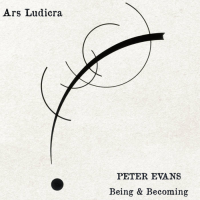Home » Jazz Articles » Album Review » Adam Pieronczyk:
Adam Pieronczyk:
Polish saxophonist Adam Pieronczyk, on a tour of Mexico—his first—had the opportunity to visit Monte Alban, in the early morning hours, when the artificially-leveled, pre-Columbian, ruin-studded plateau, just outside of Oaxaca City, was free of its normal tourist crowds. He found the spot "one of the most enigmatic places [he'd] ever been to...like some archaic airport for spaceships, or a set from a science fiction film." He goes on about—this in the disc's liner notes—the possibilities of alien interventions, and the otherworldly aura of Monte Alban. So taken with the place was Adam Pieronczyk, that upon his subsequent arrival in Mexico City, he procured studio space for himself, electric bassist Robert Kubiszyn and drummer Hernan Hecht, where they laid down the tracks for marvelously spectral and supremely modernistic recording, Monte Alban.
At its heart a trio album, the sound is much enhanced by Pieronczyk's use of keyboards, electronics, digital sound processing and drum programming. And if the site Monte Alban conjures visions of alien spaceships landing and lifting off from the plateau, the music of Monte Alban serves as a fitting soundtrack for the notion. Pieroncyzk's saxophones, soprano and tenor, have a haunting, "enigmatic" tone. It's the tenor on the set's opener, "The Arrival," that sounds as if its echoing down from the belly of a hovering spacecraft, while Kubiszyn's bass emits the heartbeat of death, echoing up from unseen catacombs, punctuating drummer Hecht's ominous, distant rumble of thunder.
"The Eye Of the Jaguar" features the saxophonist on soprano, weaving succinct, sinewy lines around an infectious dance club groove—spindly-bodied, big- headed, big-eyed outer space aliens busting some moves on the plateau with the indigenous, perhaps. "At the Foot Of the Heavens" is a shadowy tone poem, with ghostly electronics humming from out of the clouds, and "Aliens, Shamans, Glyphs and Ciphers" features the saxophone and bass playing a circuitous game of tag. "Monitoring Earth (Building J)" seems sourced from the bridge of a watchful spacecraft, replete with subtle electro-ticking and unearthly drones interwoven with mysterious saxophone ruminations.
Listening to this music, the words spontaneity and immediacy come to mind. Pieronczyk encountered Monte Alban, felt a deep inspiration, and sought out a way, without delay, to record his impressions. And they are fresh and innovative, modern, iridescent, softly lit by a light source of indeterminate and seemingly unearthly origin.
"Monte Alban Blues" emerges melodically from the dark mists of a lavender dawn, Pieronczyk's soprano illuminating the landscape over percolating percussion and dark-toned, ebb-and-flow drones. "Danzantes" explores a seesaw turbulence; "Departure" closes the set on a spare, doleful note.
Saxophonist Adam Pieronczyk's auspicious encounter with a mystifying place, in conjunction with his "strike while the inspiration is hot" decision to record his ideas quickly, has resulted in his finest work of art yet—a curious, offbeat, finely-focused recording called Monte Alban.
Tags
Adam Pieronczyk
CD/LP/Track Review
Dan McClenaghan
Adam Pieronczyk / Jazzsound
Robert Kubiszyn
Hernan Hecht
Monte Albán
PREVIOUS / NEXT
Support All About Jazz
 All About Jazz has been a pillar of jazz since 1995, championing it as an art form and, more importantly, supporting the musicians who make it. Our enduring commitment has made "AAJ" one of the most culturally important websites of its kind, read by hundreds of thousands of fans, musicians and industry figures every month.
All About Jazz has been a pillar of jazz since 1995, championing it as an art form and, more importantly, supporting the musicians who make it. Our enduring commitment has made "AAJ" one of the most culturally important websites of its kind, read by hundreds of thousands of fans, musicians and industry figures every month.

























